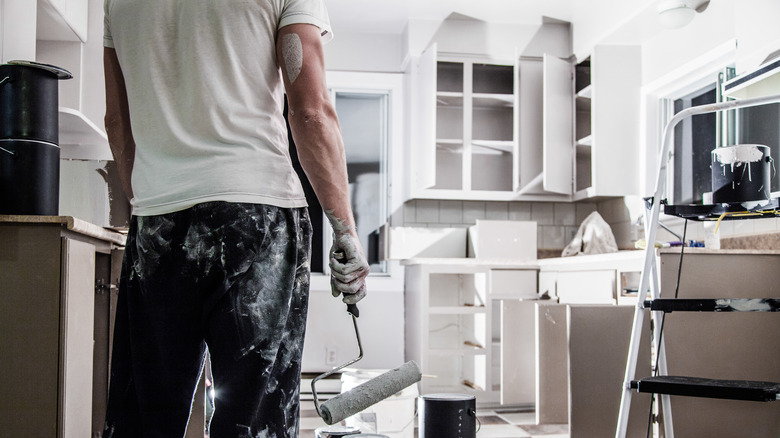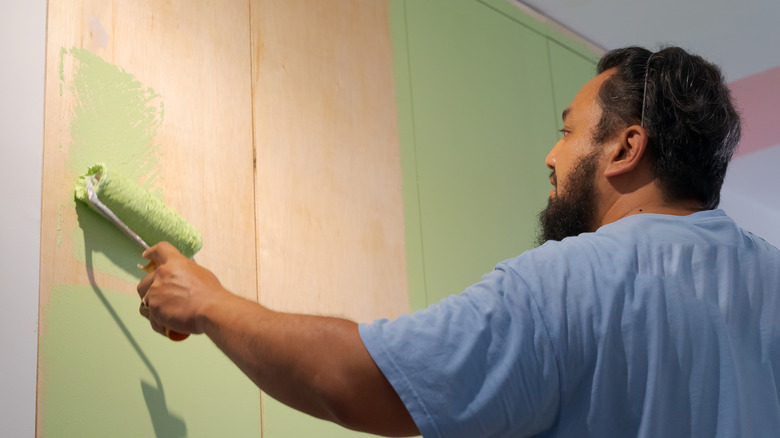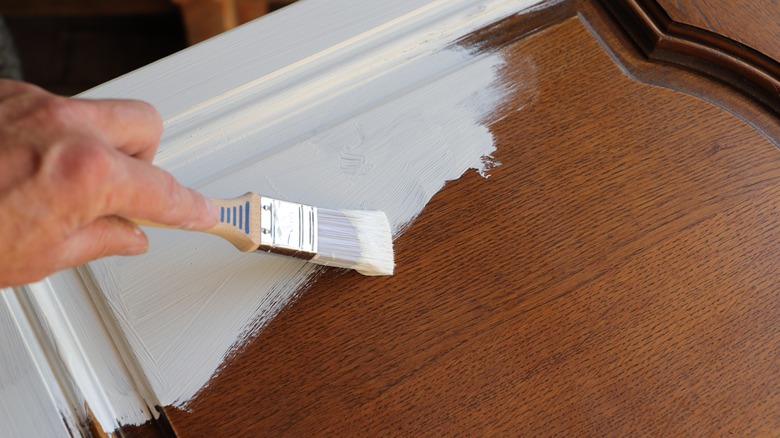Is A Brush Or Roller Best When Painting Your Kitchen Cabinets?
Painting kitchen cabinets is a great way to provide a splash of color and to show off your sense of design and style in this room, where everyone seems to spend a large chunk of the day. It also can generate an updated, modern feel in the space for minimal effort and cost. But what tool should you use to paint your cabinets? A roller makes the job go significantly faster, but it limits the types of paints you can use to something without a glossy finish because of the texture on the roller. A brush works with any kind of paint, but it takes quite a bit longer to cover the surface. It also can leave behind visible brush strokes, which detract from the overall look.
The best potential solution for a DIY project is to use the roller on the large surface spaces of the cabinets, like the doors and sides. Then follow with the brush in areas where the roller won't reach, such as any narrow edges, corners, or design features that are recessed. You also can receive better results in terms of the finish by selecting the best type of paint for your kitchen cabinets. A higher quality will cost a bit more, but it delivers a better overall look, which is important in an area where you spend a lot of time. Use the same brand of primer and colored paint, too, for the best results.
Best time to use a roller to paint kitchen cabinets
A roller delivers a smooth finish on the cabinets, and it does so in a reasonable amount of time. If you need to be using the kitchen several hours after you start painting, it lets you finish the job quickly so the space is usable again as quickly as possible. Sticking with a high-quality roller gives you the best chance of gaining full coverage when applying the paint and achieving the look you want from the finish.
"We recommend you use a good quality smooth mini roller to give the best finish -– such as the Two Fussy Blokes –- these rollers are exceptional and make light work of an onerous task," says Victoria Yardley of Victory Colours in an interview with Homes & Gardens. "Try a sustainably-sourced paintbrush for all the edges and corners."
If you choose to use a roller on the kitchen cabinets, select the right length for the job. If you have large surface space on the cabinets, a 6-inch roller should deliver the best results. For smaller cabinets or for work that needs to be more precise, stick to those measuring 4 inches or less in length. If the cabinets are extremely smooth, you can select a nap as thin as 3/16 inches. If the surface is a bit rougher, use a thicker nap, perhaps as thick as 3/8 inches.
Painting with a brush on kitchen cabinets
When choosing to use a paintbrush with the cabinets in your kitchen, it's important to select the correct material in the bristles for the job. Because there are so many types and sizes of brushes, spend a bit of time thinking about how you plan to use yours.
If you are painting on larger cabinets, you will want to select a larger size of the brush, so you can complete the job faster. Painting can become tiresome physically and mentally, so you don't want to use a tiny brush that takes several times as long to finish the job. As another factor to consider, if you plan to use the brush to cut in corners inside the cabinet, having angled bristles on the brush makes this process easier. Think about the type of paint you plan to use. Latex work best with polyester or nylon bristles, while oil-based paints work better with natural bristles.
If you are hiring a professional to do the job, it's possible that the pro will simply use a sprayer, which provides an even coat over the entire surface of the cabinets, regardless of the texture of the cabinets or the design features in use. However, using a sprayer can be a messy job when done indoors for someone who doesn't have experience using it. It's also costly, as you can expect to pay a pro around $90 per hour as the cost to paint kitchen cabinets.


